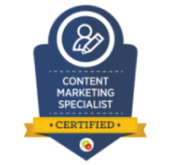Teachers don’t care about your product the way you do. The age old ‘features vs benefits’ debate, when applied to marketing to schools, is extremely nuanced.
Marketing and selling to teachers is complex, time consuming, and often has multiple stakeholders in the decision making process.
Educators only care about one thing – why you will make their life easier and make them feel better.
It’s easy to treat a teacher audience like a homogenous “blob” who only make rational decisions based on data and hard facts.
But never forget: teachers are people consumers too.
They have the same mix of biases, emotional triggers, and status concerns as the rest of us. And these elements influence their decisions as much as promises to raise pupil outcomes by X%.
People shop with their head, but buy with their heart.
Ultimately, we, as potential customers, ask ourselves two questions whenever we’re thinking about buying something:
- “Why will this product make my life easier?”
- “Why will this product make me feel better about myself?“
This even applies to necessities, like food and clothing.
And, of course, textbooks, laptops, playground equipment, and so on.
So how do you position your educational product to appeal to teachers as consumers?
The key is to inspire them by selling the ‘why’ instead of the ‘what’.
This helps you to forge a stronger connection with teachers to convert them into loyal brand promoters – and increase your profits.
The ‘why’ is important because it changes your customers’ inner monologue to: “OK, these people get me. This is a good place to start”.

6 Inspirational ideas to inspire your teacher prospects
Rethink your mission and vision statements
Does your mission statement make it clear…
- Who you are
- What you do
- Why you do what you do
Think about your vision statement too. Your mission statement maps out the journey in your vision statement.
Does it describe how you want to impact people’s lives with your services and where you aspire to be in the world?
It shows you’re thinking about the bigger picture – not just the present.
These statements will form an early connection with your customer and, if they can see that you follow your core values, they are more likely to share your beliefs and stay true to your brand.
Stop overselling your product
If you go in with the hard sell (the ‘what’) then you’re overselling and risk alienating your target audience.
A soft sell is far more effective by positioning the ‘why’ at the core of your message.
Great marketing is great storytelling so give what you’re selling personality and context. Write inspirational content from your customers’ perspective – not yours.
Finding that one relevant reason
Why should they buy from you and not your competitors?
What makes you so special?
Don’t kid yourself – every product has competition. Knowing this leads to panic. And that usually translates as seeking competitive advantage by increasing the number of features, or offering a discount, or slashing prices.
But these tactics won’t inspire anyone, at least not in the early stages of the buying cycle.
Stand out from the crowd with an inspiring idea at the heart of your message. What have other companies overlooked by choosing the hard sell/feature list approach?
Consider how your services promote social responsibilities and wellbeing for your customer.
Your belief will attract like-minded people to buy your product and advocate your brand too.
Identify your customers’ needs and challenges
What is a big challenge for your customer right now?
Are you in touch with your customers’ needs?
Have you thought about social listening?
As well as setting Google alerts and checking the latest news, you can search social media sites (what are your followers, competitors’ followers and influencers saying?), forums, community groups and blogs to find out what the conversation is.
Use this as research for your campaign message.
You can run your own survey which shows your customers that you want to hear their thoughts too.

Make it about THEM and not YOU
Why can YOU help? Why do YOU benefit your customers’ lives?
Your content, copy, and campaign messaging must revolve around your customer’s pain points. Why would they want to hear all about you?
Your ideal customer needs to be the main character – not the supporting best friend role.
To do this – highlight their problems and prove you understand and exist to help them.
Provide valuable content – for FREE!
Educate your customers without asking for anything in return.
How?
With content-rich articles.
Think about specific types of content to engage your audience with topics that relate to current situations, feedback from surveys and ideas from social listening.
You can then create relevant and informative blog posts in the style of thought pieces, tips, advice, facts, studies from experts, etc.
If you don’t have the time or manpower – outsourcing from leading consultancies in the sector, media partners and freelance writers.
Why? Because when your audience needs your product or service, whose content are they likely to remember and want to buy from and become a customer as a result?
That’s right – yours.
Top questions you need to ask yourself…
Here’s something for your inner monologue.
Think about these questions when you’re drafting your next piece of content.
Whether it’s a lead magnet, blog post, email, PPC campaign or social media post – get into your customers’ mindset from the get-go and echo your vision statement…
- Who are your target customers – demographics, personalities, behaviours and lifestyles?
- What are your customers’ values and interests?
- How does your company’s values reflect your customers’ values?
- What needs, problems and frustrations do your target customers have?
- What are your customers doing while they’re using your product or service?
- What is your customers’ primary goal in using your product or service?
- How does your service or product help your target audience?
Don’t forget the mantra: sell the ‘why’ instead of the ‘what’.
Need some help working through your digital marketing to schools? Book a growth strategy call with the Bee Digital team.










